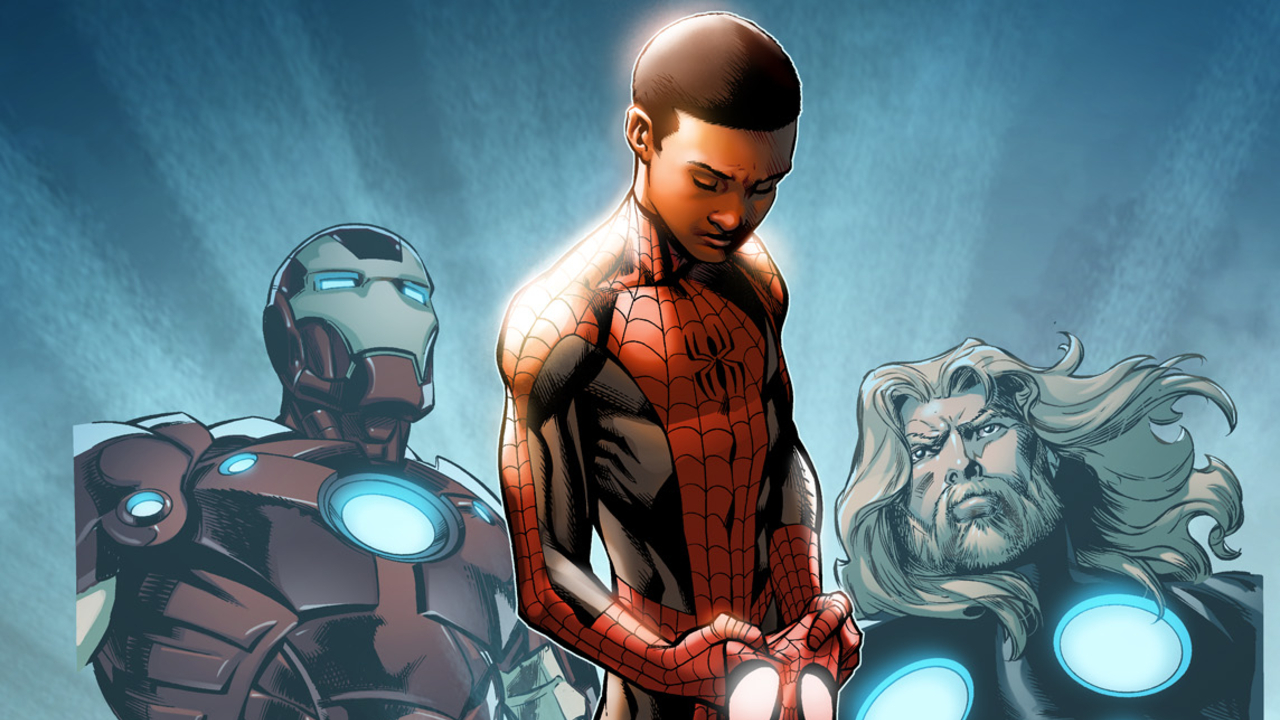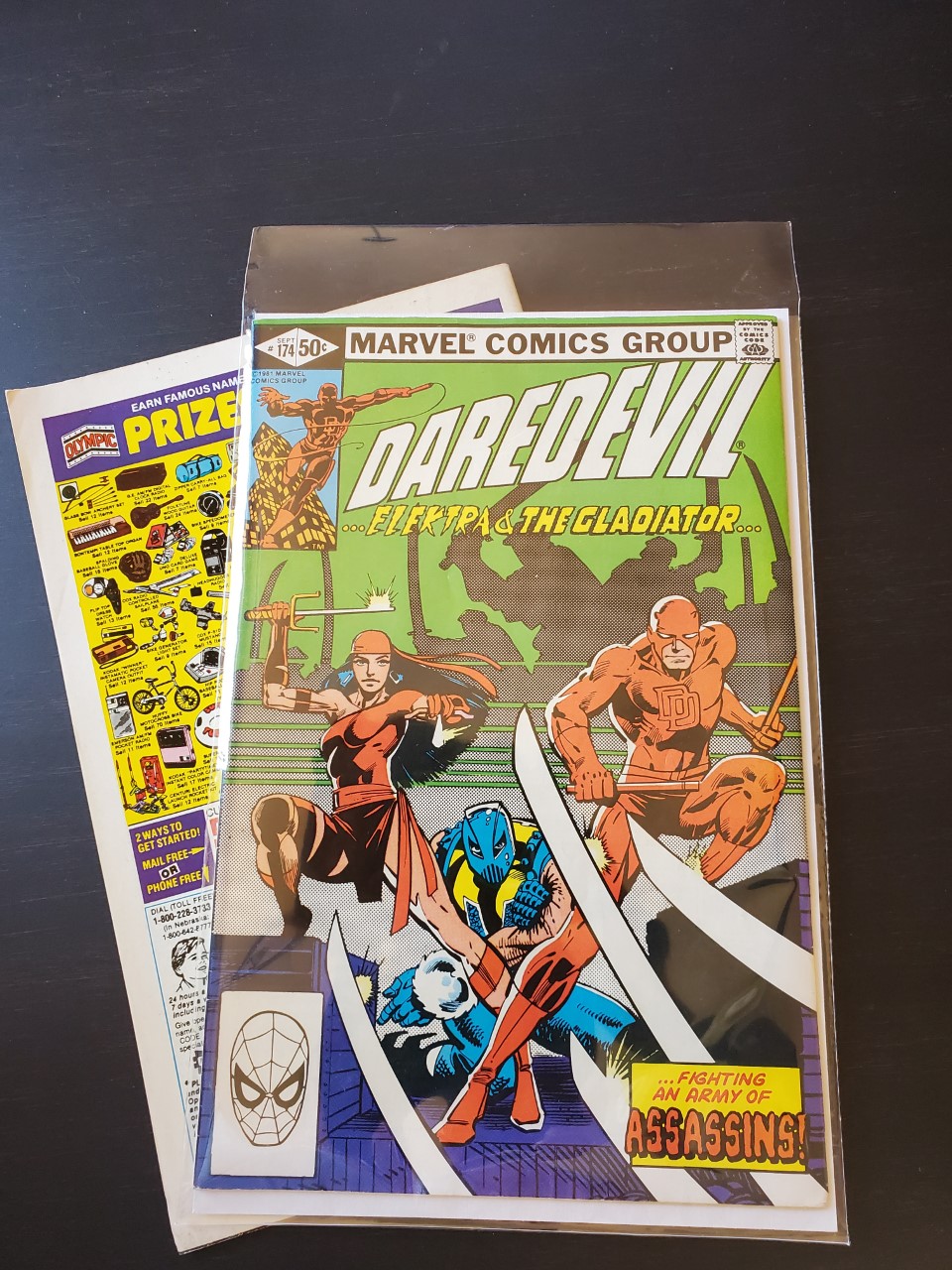Movie, TV, and games announcements driving back issue comic book sales
Plus quarter bin issues are gaining value, Canceled Comic Cavalcade is getting hot ,and how to solve 'spine roll' in our latest comic book collecting news wrap-up

When back issues suddenly get hot, said heat can be generated from within the comic market (the recent Marvel Spotlight #9/King in Black spike being an example), or without (see pretty much any movie/TV/other media announcement, and the scramble for first appearances and so on).
So what's happening more these days? And is either one "better" than the other, at least in the eyes of stores?
"I'd say it tends to be more driven by other media announcements," said Joe Field, owner of Flying Colors Comics in Concord, CA. "Miles Morales on the PS5? Another jump for [Morales' first appearance in] Ultimate Fallout #4."
Field goes on to say that "organic" surprises tend to happen because publishers know that instant sell-outs are cheap promotion.
"Any sales lost by not printing more on an issue like Daredevil #25 are made up for by retailers ordering second prints, and upping orders for #26 and beyond," he said.
Steve Anderson, owner of Third Eye Comics, with four stores in Maryland and Virginia, tends to agree with Field.
"Nowadays, when you see a flurry of media announcements, you see back issues fluctuate in price rapidly," he said. He also prefers when things happen "organically."
Get the best comic news, insights, opinions, analysis and more!
"Honestly, I personally think it's healthier for the long term when it's organic, like the [writer] Donny Cates bump in tying Venom back to Thor: God of Thunder, for example, or the debut of Punchline in Batman #89, because it creates excitement around the stories," Anderson said. "Comics as collectibles is awesome, and a huge part of the business, but good story is always the real driver behind the books, and will sustain interest in a book even when the heat dies off."


Anderson cites the current Immortal Hulk book as an example.
"It's a phenomenal read," he said. "The early issues, the first 10 or so, have tremendous secondary market heat, and that collector heat brought attention to an already-quality book, and then retained those readers. Voilà, it's the best-selling Hulk run in decades."
Field agrees with that concept as well and draws it broadly.
"My experience shows that happy readers tend to keep buying much longer than crash-and-burn speculators," he said. "I'm happy there are many ways to enjoy comics, but I'd much rather we had far more happy readers for periodical comics."
It came from the quarter bins
Regardless of whether the new hot issue du jour came from an impetus inside or outside the comic market proper, many trashes are becoming treasures these days. Collectors are digging mining for gold.
"The back issue bin dive is strong," said Jen King, owner of Space Cadets Collection in Oak Ridge North, TX. "We have lots more people doing it in recent months. I like it."
King is valuing her storage stock more as well.

"I got distracted by finding a long box of the last part of Maximum Carnage in Spider-Man Unlimited #2 which is now at least a $5 comic," she said. "I was struck by how many comics that I set aside just two years ago for future spikes have made the transition from 25 cent books to minor or major keys just in the last six months."
King said that if stores look hard enough, they might find that they're "sitting on gold mines."
"As characters like Peacemaker and the Polka-Dot Man become accessible to the un-comiced—my made-up word—via movies, people become interested in the source material. Some are even interested to enter a comic shop to chat and dig. I love that this helps grow the community of comic fans."
The cost of buys
When stores and dealers sell, they have to replenish their stock. Mile High Comics is world-famous for having more than 10 million back issues in stock.
"I am a hoarder," said Mile High owner Chuck Rozanski. "Hey, I don't lie about it. Everyone else dances around the issue, but I stand on it."
Rozanski loves buys, and Mile High is an aggressive buyer. But also makes sure he's judicious about his process.
"The real cost of collections is not in buying them, but in sorting them," Rozanski said. "We look at a collection, and we have to see where we get our money back out of it in a relatively short period of time. If I can see say, 10% of the books that are going to get me back 100% of my money, then I can afford to stick the rest of them into a trailer and wait until we can cost-justify sorting them."
That cost is more than just storage. It can be the product itself. Remember, Mile High recently lost a storage trailer filled with about 150,000 comics to theft and vandalism.

"That's why this trailer was pillaged," Rozanski said. "We didn't have the manpower to physically handle these books at the time. We had to put them somewhere until a later date, and that later date obviously lasted too long. But bear in mind: We only lost one trailer out of seven. And I purchased two million more comics in the time this trailer was sitting here, and even most of those still haven't been sorted."
(One of) the rarest of the rare
We've mentioned scarce, end-of-run comic books in previous columns, but the ultimate in end-of-run rarities are a pair of books rushed out solely for legal reasons.
Back in 1978, the infamous "DC Implosion" happened, with the publisher canceling more than a dozen titles such as Black Lightning, Claw the Unconquered, Kamandi, Steel: The Indestructible Man, and more. To secure copyright on art for the stories DC had commissioned, the publisher had to bind and distribute copies to register with the copyright office in Washington DC. Thus was born Canceled Comic Cavalcade #1 and #2. The volumes measure 412 and 532 pages respectively, and feature photocopied, black-and-white art under a blue cover. The title itself was a gallows-humor pun, hearkening back to DC's Comic Cavalcade, an anthology title of the 1940s-'50s.
Most sources state that only 35 copies of each were made, though some people attest to it being 40. Many were handed out to DC staffers (with copies linked to writer Michael Fleischer and editor Julie Schwartz bubbling to the surface in recent years) and it's reputed that a few were given to a newsstand near the DC offices with vague instructions tantamount to, "Here, take these, sell 'em, whatever. They're now officially 'distributed.'"
A set of #1 plus #2 in fine condition sold for $3680 in 2005 and a VG set sold for $2629 in 2007 per The Overstreet Comic Book Price Guide. Bootleg copies are sometimes seen, as even the 'original' copies had crudely photocopied art, easy to pass off as original. Legit copies rarely make it to market, though current rumors indicate an original set may come up for sale in early 2021.
Solving spine roll on the cheap
All collectibles are condition-sensitive, but one defect almost unique to comics is spine roll. When groups of comics are stored as intended, typically vertically in properly sized boxes, the impetus is to have them all front-cover facing. Problem is, with all the spines on the left side, spines can start to 'roll' and curl up, downgrading the comic.


Charlie Novinskie has an easy solution. Novinskie is a lifelong comic collector, an Overstreet Comic Book Price Guide advisor, and the former sales and promotions manager for Topps Comics. Novinskie uses Mylite bags and backing boards, and loads in two comics per bag, with a backing board separating the two. The back-to-back alignment 'balances' the load in the box with 50% of the spines on either side, provides a pleasant aesthetic solution (Hey, you can look at your comics from front to back of the box, then turn it around and do it again!), and cuts bag-and-board expense in half.
It's worked well for Novinskie, whose collection of 20,000 comics has remained in pristine condition.
For more comic book collecting news, check out these previous wrap-ups:
- Milestone values rising, variant covers still a draw, and other comics collecting news
- King in Black sends comic book collectors in search of obscure Steve Ditko-drawn Marvel back issue
- Three Jokers variant going for $300 on eBay and new comic book supply is slowly melting away
- Daredevil #25 surprise sent retailers scrambling plus revisiting a hot variant a year later
—Similar articles of this ilk are archived on a crummy-looking blog. You can also follow @McLauchlin on Twitter


